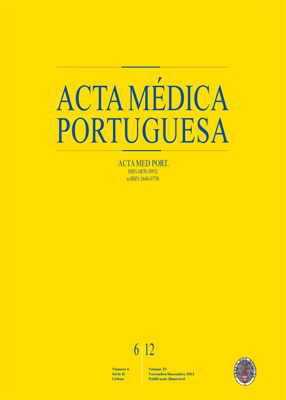Mri of Pregnant Patients for Suspected Pulmonary Embolism: Steady-State Free Precession vs Postgadolinium 3D-GRE
DOI:
https://doi.org/10.20344/amp.1352Abstract
Introduction: Pulmonary embolism is a leading cause of maternal mortality in the developed world. Ventilation-perfusion scintigraphyand Computer tomography cause ionizing radiation exposure. Gadolinium-enhanced magnetic resonance imaging is generally notindicated in pregnant patients. MRI using motion resistant techniques that do not use intravenous contrast material, such as balancedsteady-state free precession may be a better approach in pregnant patients.Purpose: To describe the preliminary findings of the use of SSFP for the evaluation of pregnant patients with suspected PE, and tocompare with a young women population evaluated with postgadolinium 3D-gradient echo sequences for the same intention.Materials and Methods: Radiology database was searched for two groups of subjects who underwent chest MRI at 1.5T for suspectedPE, between January, 2007 and June, 2010: pregnant patients with MRI including balanced SSFP (group A) and females younger than45 years old including a T1-weighted postgadolinium 3D-GRE (group B) sequence. The final study population consisted of 21 subjects.Blind and independent evaluation of MR images was performed for image quality of the pulmonary arterial system, PE and other chestfindings. Data was subject to statistical analysis.Results: Good image quality was observed in all central and lobar arteries on both groups and in 90% (group A) and at least 83.3%(group B) of the segmental arteries. There was no significant difference between groups A and B for image quality of central and lobarpulmonary arteries (p > 0.05).Conclusion: SSFP can visualize central, lobar and segmental pulmonary arteries with sufficient image quality in pregnant patients,comparable to 3D-GRE.
Downloads
Downloads
Published
How to Cite
Issue
Section
License
All the articles published in the AMP are open access and comply with the requirements of funding agencies or academic institutions. The AMP is governed by the terms of the Creative Commons ‘Attribution – Non-Commercial Use - (CC-BY-NC)’ license, regarding the use by third parties.
It is the author’s responsibility to obtain approval for the reproduction of figures, tables, etc. from other publications.
Upon acceptance of an article for publication, the authors will be asked to complete the ICMJE “Copyright Liability and Copyright Sharing Statement “(http://www.actamedicaportuguesa.com/info/AMP-NormasPublicacao.pdf) and the “Declaration of Potential Conflicts of Interest” (http:// www.icmje.org/conflicts-of-interest). An e-mail will be sent to the corresponding author to acknowledge receipt of the manuscript.
After publication, the authors are authorised to make their articles available in repositories of their institutions of origin, as long as they always mention where they were published and according to the Creative Commons license.









